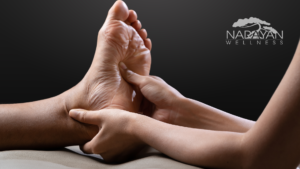In a fast-paced world of immediate satisfaction, the foam roller has become a “go-to” tool for quickly releasing myofascial tension and muscle fatigue. It’s often used in between massage therapy sessions by new and seasoned athletes, physical therapists, and chiropractors.
Why Do So Many People Use Foam Rollers?
The foam roller is inexpensive, and you can purchase one almost anywhere these days. The foam roller is quick and easy, not to mention always available. They have smooth ones with nobs, interestingly shaped ones, and rollers of all sizes. You can utilize it at home, sometimes at work, after a workout, and even pack one in your bag. More often than not, it feels great; it doesn’t take much expertise to figure out how to use it, and there is usually no need for anyone else to help.
Why Use A Foam Roller?
Muscles and fascia (the connective tissue all through your body) can be negatively affected by overuse or injury, especially in athletes. The impacts felt can be light irritation or extremely painful from the muscles contracting and the fascia becoming hard and, in many cases, inflamed. This can limit the range of motion and hinder movement. People that use foam rollers often feel that rolling over and maintaining pressure over problem areas can reduce symptoms from problem areas.
Does Foam Rolling Actually Work?
Multiple studies have demonstrated that when properly used and with a consistent foam rolling schedule, ROM and recovery were enhanced without diminishing performance; however, they had practically no impact on the fascia. There has been much debate on whether fascia can actually be stretched. We do know, however, that with consistency, it can be made more pliable through manual therapies. It is yet to be found if medical professionals have even been able to lengthen the fascia. Numerous Doctors and Surgeons have claimed this to be impossible, yet science is always evolving.
To accomplish the results desired through foam rolling, a person must roll the affected area, then use static pressure and the right amount of force on the right spot, and most do not know how to do this correctly. They also often neglect to roll on a consistent basis.
Likewise, without at least some comprehension of anatomy, there can be little to no results, and sometimes can even worsen things. To be effective, you must know which muscles are injured, strained, and inflamed versus which muscles are weak or overstretched.
Is It Possible To Use Foam Rolling Instead Of Massage Therapy?
Definitely not! Foam rolling can never replace massage therapy from a highly-skilled and qualified massage therapist with the comprehensive myoskeletal knowledge they possess. The exception would be if the client has an adequate level of anatomy education. Without this, it is nearly impossible to know why they are experiencing the pain or discomfort and how to address the root of the problem. A person may not know how to distinguish between pain and an actual injury making matters worse when they should have seen a professional from the start.
Because most foam rollers are wide and have a one size fits all design, it usually does not address the specific issue. A professional massage therapist with appropriate training can effectively get into the trouble spots with their hands for more detailed and comprehensive work. An experienced therapist will likewise know the specific points and areas never to use a foam roller on – but that’s a topic for another day.
The Conclusion?
Alas, this is not a perfect world where massage is free. So, unless you have an unlimited budget, you likely can’t book an appointment with your massage therapist daily. And even though the foam roller can never replace and accomplish the same results as a well-trained and gifted massage therapist. The best advice one can get isn’t to toss your foam roller in the trash. Instead, use it as a temporary fix in between regularly scheduled massage sessions. Utilizing a foam roller in conjunction with massage, it can keep you feeling better longer.
So, at your next massage appointment, ask your therapist how to incorporate foam rolling into your wellness regime. He or she can educate you on how to use the foam roller for your specific situation and how to get the best results.




